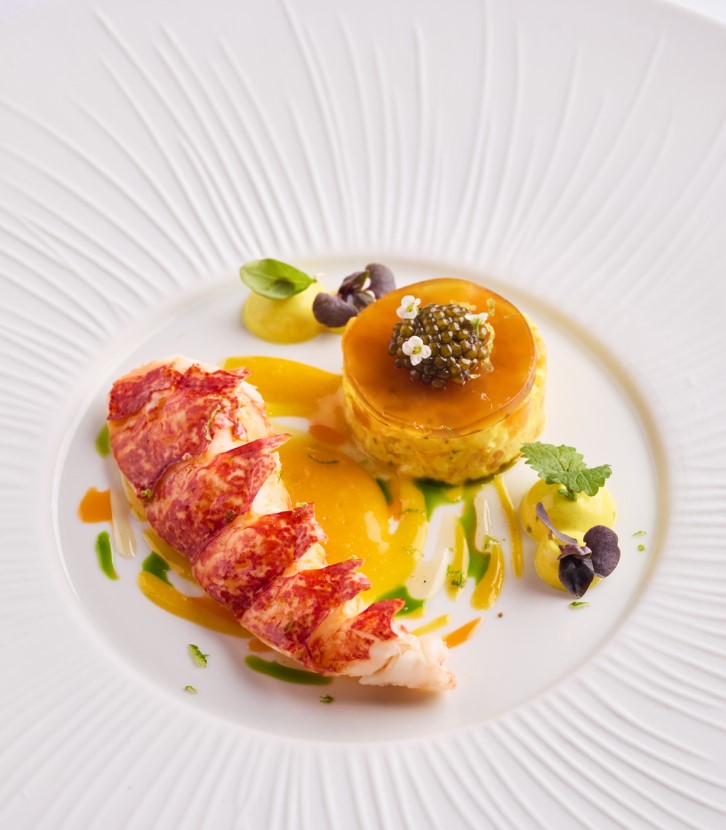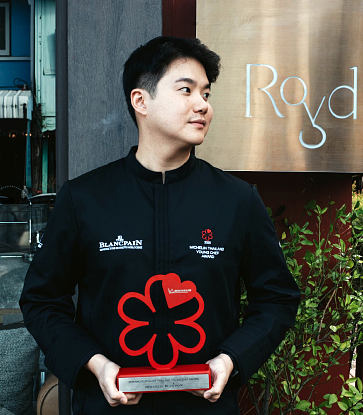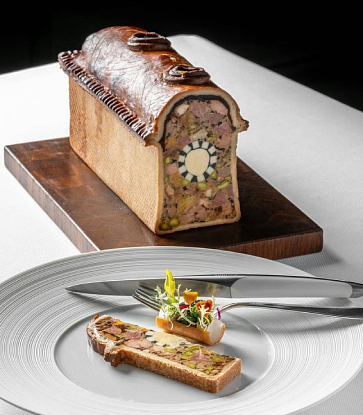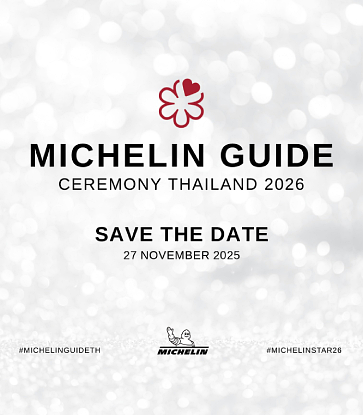The soaring heat has arrived, heralding the beginning of summer in Thailand. And in April, Thais celebrate their New Year, known as Songkran. Festivities are held nationwide in celebration, with some being more distinctive than others.
Here is how different regions celebrate Songkran in their own unique ways along with Thai summer treats you don’t want to miss across Thailand. Don’t forget to keep up-to-date with the COVID-19 situation wherever you plan to visit before your journey. And always wear your mask and wash your hands often to keep safe!
North
Try Chiang Mai’s Kanom Thien Lanna‘Pi Mai Mueang’ is what they call Songkran in the Northern Thai dialect. Here, traditions include asking elders for blessings and building sand pagodas. And of course, food is also a highlight, especially in Chiang Mai. Let’s start with khanom jok, known as khanom thien or khanom nom sao in other regions.
Northeast
Taste Khao Pun during Songkran in Nakhon PhanomAlong with the reverence and rites in Nakhon Phanom during the Thai New Year, you will find the local deliciousness of khao pun, or khanom chin. The menu may sound common, but it’s popular among Northeasterners during Songkran. Khao pun is offered to relatives when people go home during this days-long national holiday. It is at its tastiest when eaten freshly made. Flour dough is sieved into noodles then dropped into boiling water. Top with jaew (Northeastern-style chilli paste) or nam plara (fermented fish juice) to add more flavours and turn up the heat.
To truly experience this dish, there is a road in Nakhon Phanom named after this special dish. Khao Pun Road holds a memorable Songkran celebration where varieties of khao pun dishes are available for you to try.
Central
Kalamae, Samut Songkhram goodiesA Thai dodol or kalamae kati (a traditional sticky, toffee-like palm sugar-based confection made with coconut milk) can be found at almost every Thai souvenir shop, and Samui Island in Southern Thailand is famous for it. But, in fact, in Central Thailand, such as in Samut Songkhram, neighbours come together to prepare this special sweet treat before the first day of Songkran so they can offer it to monks.
Community-made kalamae only happens on special occasions as it requires hard work and long hours. With an enormous pan over a low fire, people take turns every six to seven hours to stir the ingredients with wooden paddles in order to keep the texture soft and sticky.
Care to witness the making of this authentically Thai sweet delight? Head for the kalamae preparation ceremony at Wat Satthatum, where people of Mon descent turn Samut Songkhram’s acclaimed coconut milk, coconut sugar, and palm sugar into the delicious dessert.
Nonthaburi, the original Mon-style Khao Chae
Ko Kret in Nonthaburi near Bangkok is a popular weekend destination. Mon, or Raman, culture has prospered on this little island for more than 200 years, with one of the earliest settlements said to be Kwan-Aman. With their exceptional expertise on pottery, earthenware has become Ko Kret’s best-selling community product. At the island’s heart lies Wat Paramaiyikawat, which houses a Tripitaka, ancient Buddhist scriptures, in the Mon language.
But what to enjoy when in Ko Kret? Do not miss Mon khao chae (literally translated as “soaked rice”) should you be there during the hottest months of Thailand. Traditionally prepared during Thai New Year as offerings for monks, now restaurants on the island offer it all year round. Condiments of Mon khao chae are also generous. They consist of fried kapi (shrimp paste) balls, fried sweetened pork and fish, stir-fried sweet pickled Chinese turnips, stuffed sweet peppers, fried stuffed shallots, and various vegetables.

Phra Pradaeng Songkran Festival in Samut Prakan
The Mon also settled in Nakhon Khuean Khan, or Phra Pradaeng, during the early Rattanakosin era, and one legacy that remains is the Phra Pradaeng Songkran Festival or Pak Lat Songkran Festival. Generally held one week after the official Thai New Year, it is well known for being one of the most festive and water-splashing fun near Bangkok.
Today’s Phra Pradaeng Songkran is an homage to the Mon Songkran traditions of the past.
During the festival, there isn’t only the classic Nang Songkran, or Miss Songkran beauty pageant, but also the male equivalent with Nhum Loi Chai. Contestants wear beautiful traditional Raman outfits to honour their heritage.
You can join parades that invite people to release birds and fish for good karma as is Buddhist custom. You can also witness rare recreational activities such as Raman Saba games and traditional singing performances called Ta Yae Mon.
Because water splashing is prohibited during Songkran in 2021, the province will instead hold a Loi Krathong Festival at Muang Boran Museum. Visitors can experience the atmosphere of how Thai-Mon communities lived and played during the Ayutthaya period.
Wat Pradittharam, Bangkok’s secret festival
Bangkokians may not know much of Wat Pradittharam, but the temple has long been the centre for a hidden gem of ‘Ban Mon’ communities. Mon settlers from Dawei and Myeik in Myanmar migrated here in the early Rattanakosin era, during the reign of King Rama II.
The Mon here adapted their lifestyle through the generations. But, when Songkran comes, Mon descendants reunite to celebrate as their ancestors did at this temple, in traditional garb honouring their common faith.
You can experience saba-tossing games, parades bearing Thong Thakab (centipede-shaped flag), and Sao Hong (pole with swan at the top), as well as the long-standing ceremony of pouring water onto a Buddha image using a long, decorated wooden tube.
Try not to miss the community-made khao chae. Mon khao chae is a delicacy prepared only during the Songkran festival for blessings and prosperity.
West
Phetchaburi, the Khao Chae provinceKhao chae is a seasonal dish served during the summer in Thai restaurants. It is rare to find it offered other times of the year. But, did you know that, in a certain province, khao chae is served all year round? Phetchaburi is known as the province of khao chae, where you can find this cool Thai delicacy on every street corner at an affordable price.
Khao chae dates back to the establishment of Phra Nakhon Khiri, or Khao Wang, “The Palace on the Hill”. When King Rama IV vacationed in the area, royal recipes started to blend with local ones, including khao chae. As time passed, the abundant side dishes in the royal version of khao chae was reduced to typically pla wan (sweet shredded fish), chaipo phad (stir-fried sweet pickled Chinese turnips), and luk kapi (shrimp paste balls). The flower-scented water is kept cool in an earthen jar, without ice. (It is almost offensive to put ice in Petchaburi-style khao chae).
This dish is so popular that a road is named after it. Under normal circumstances, Khao Chae Road is the centre of Songkran celebrations. However, with the ongoing pandemic, we suggest calling your preferred restaurants in advance to ensure that they are opened so you don’t miss out after a long ride.
Sangkhlaburi Mon Songkran in Kanchanaburi
Blending cultures is another Songkran charm. Head to Thailand’s westernmost district of Sangkhlaburi, and you’ll find a wonderful blend of Thai and Myanmar cultures. The Sangkhlaburi Songkran is like no other. Wat Wang Wiwekaram, or Wat Luang Pho Uttama, hosts a ceremony where devoted men lie in a long line, and let monks step on their backs as a blessing.
The temple is dedicated to Luang Pho Uttama, originally a Burmese citizen who later fled to Thailand as a Mon Buddhist monk. He became one of Thailand's most admired and revered religious figures and helped build the Sangkhlaburi communities, including an 850-metre wooden footbridge which is a popular tourist attraction.
The Sangkhlaburi Songkran festival lasts five days. Activities include pouring water onto a Buddha image with a long, decorated wooden tube, parades to offer robes to monks, and preparation of their unique take on the famous khao chae.
South
Hae Nang Dan at Nakhon Si ThammaratWithout COVID-19, we would see the distinctive Brahmin Songkran in Nakhon Si Thammarat, the only place in Thailand that continues the Hae Nang Dan tradition, a blend of cultures of Nakhon Si Thammarat, which was once a centre of Brahmanism and Hinduism.
On 14th April, three carved wooden tablets, called Nang Dan, are paraded to the Giant Swing as a part of Triyampawai, or the Swing Ceremony. Each piece signifies a god waiting to greet Shiva who visits Earth during Songkran festival. It is believed the deity will then bless the city and its people.
Note: Songkran festivities are restricted across Thailand in 2021 due to the pandemic. However, you can still pour water onto Buddha images and elders for their blessings. Please keep yourself updated on the pandemic situation via https://ddc.moph.go.th/viralpneumonia/index.php and www.tat.or.th/th.






















